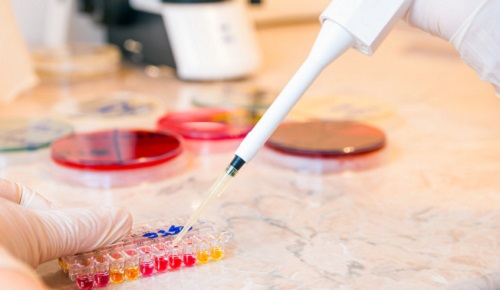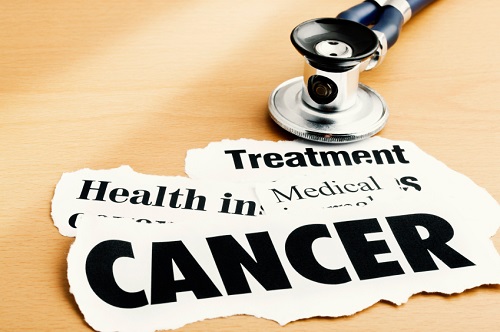Many researchers, oncologists, and pharmaceutical companies hail CAR-T therapy as a “cure for cancer.” But what exactly is this evolving technology? How is it expected to revolutionize oncology? Here are 14 key words that help define the cancer therapy.
1. Chimeric antigen receptors (CARs) are genetically engineered protein constructs that are attached in the lab to a patient’s own T-cells. The protein construct, which combines DNA from several genes to create a new T-cell receptor, recognizes and binds to a specific antigen found on tumor cells and in response to that binding, activates the re-engineered T-cells to seek and destroy cancer cells.
2. CAR- T Therapy, still an investigational cancer treatment, uses chimeric antigen receptors (CARs) to reprogram a patient’s immune system so it can recognize and fight cancer cells. To do this, CAR-T therapy shuts down the mechanism that tumor cells use to turn off T-cell activity and overpower the immune system’s ability to fight cancer cell growth.
The therapy, which begins in a laboratory, involves:
• Drawing blood from a patient with cancer
• Harvesting T-cells from the drawn blood
• Attaching the chimeric antigen receptor (CAR) protein to the harvested T-cells
• Growing large numbers of CAR T-cells in the laboratory
• Infusing the blood, now rich with CAR T-cells, back into the patient with cancer
Now the patient’s immune system takes over. CAR T-cells bind to a protein on the cancer cells’ surface, which activates the re-engineered T-cells to recognize and kill cancer cells.
3. Immuno-oncology, like all immunotherapies, stimulates a patient’s own immune response to prevent or resolve a disease. Immuno-oncology specifically targets cancer cells by rewiring the patient’s immune system T-cells to seek and destroy cancer cells.
4. The fifth pillar of cancer treatment, according to many oncology researchers, is immuno-oncology. The five pillars of therapy include:
1. Surgery
2. Chemotherapy
3. Radiation
4. Targeted Therapy
5. Immuno-Oncology
5. Ectodomains (external target-binding domains) are a part of the membrane protein that extends into extracellular space (space outside of a cell). Ectodomains are most often protein parts that initiate contact with surfaces, which leads to signal transduction.
6. Endodomain (internal activation domain) is the functional end of the protein. After antigen recognition, receptors cluster and a signal is transmitted to the cell.
7. Signal transduction refers to a set of chemical reactions in a cell that occurs when a molecule attaches to a receptor on a cell membrane. The resulting pathway creates biochemical reactions inside the cell that eventually reach the target molecule or reaction.
8. Signal peptide defines the short peptide, between 16 to 30 amino acids long, present at the start of most newly synthesized proteins. Signal peptides prompt a cell to translocate the protein, usually to the cellular membrane.
9. Lentiviral vectors are major tools for gene delivery in human cells. They have the ability to mediate potent signal transduction and stable expression into dividing and non-dividing cells, both in the laboratory and in the human body.
10. Trophoblast glycoprotein, also known as TPBG or 5T4, is a human protein encoded by a TPBG gene. 5T4 is an antigen present in a number of carcinomas, which has made it a target for the isolated T-cells in immuno-oncology.
11.Effector cells are relatively short-lived activated cells that defend the body in an immune response. Effector B cells, called plasma cells, secrete antibodies, and activated T-cells, including cytotoxic T-cells and helper T-cells, carry out cell-mediated responses.
12. Cytokine release syndrome (CRS), a noted side effect linked to CAR-T therapy, results when certain cells in the immune system secrete cytokines (substances such as interferon, interleukin, and growth factors). When cytokines are released into the body’s circulation system, systemic symptoms can include fever, nausea, chills, hypotension, tachycardia, asthenia, headache, rash, scratchy throat, and dyspnea. Symptoms are generally mild to moderate, although massive release of cytokines can be life-threatening. Neurotoxicity, involving swelling of the brain, is another side effect linked to CAR-T therapy. Patient deaths attributed to these side effects have prompted many researchers to question whether CAR-T therapy is as close to FDA approval as originally expected.
13. Allogeneic CAR-T therapy applies to attaching CARs to T-cells sourced and harvested from a healthy donor. The resulting CAR T-cells are then stockpiled for when a patient with cancer needs CAR-T therapy.
14. $500,000 to $750,000 is the estimated cost to treat future patients with CAR-T therapy.
1. “CAR T-Cell Therapy: Engineering Patients’ Immune Cells to Treat Their Cancers.” National Cancer Institute at the National Institutes of Health, 16 Oct. 2014. Web. 7 June 2017. https://www.cancer.gov/about-cancer/treatment/research/car-t-cells
2. “The Shape of Drugs to Come.” Amgen Science. Amgen Science, n.d. Web. 7 June 2017. https://www.amgenscience.com/the-shape-of-drugs-to-come/car-t-cells/
3. Kakarla S, Gottschalk S. CAR T cells for solid tumors: armed and ready to go? Cancer journal (Sudbury, Mass). 2014;20(2):151-155. doi:10.1097/PPO.0000000000000032.
4. Newick K, Moon E, Albelda SM. Chimeric antigen receptor T-cell therapy for solid tumors. Molecular Therapy Oncolytics. 2016;3:16006-. doi:10.1038/mto.2016.6.
5. “Exploring the Power of Immuno-Oncology.” Immuno-Oncology Now. Bristol-Myers Squibb, n.d. Web. 07 June 2017. https://www.immunooncology.bmsinformation.com/
6. “CAR T-Cell Therapy: Engineering Patients’ Immune Cells to Treat Their Cancers.” National Cancer Institute at the National Institutes of Health, 16 Oct. 2014. Web. 7 June 2017. https://www.cancer.gov/about-cancer/treatment/research/car-t-cells
7. HAYASHIDA K, BARTLETT AH, CHEN Y, PARK PW. Molecular and Cellular Mechanisms of Ectodomain Shedding. Anatomical record (Hoboken, NJ : 2007). 2010;293(6):925-937. doi:10.1002/ar.20757.
8. Ectodomain Dictionary Definition | Ectodomain Defined. YourDictionary, LoveToKnow Corporation, n.d. Web. 07 June 2017. https://www.yourdictionary.com/ectodomain
9. “signal transduction pathway”. The American Heritage® New Dictionary of Cultural Literacy, Third Edition. Houghton Mifflin Company, 2005. 7 Jun. 2017. Dictionary.com. https://www.dictionary.com/browse/signal-transduction-pathway
10. BiotechReview. “Signal Peptide – Simply Defined in 30 Seconds.” YouTube. YouTube, 14 Mar. 2014. Web. 07 June 2017. https://www.youtube.com/watch?v=epywovT_S9I
11. Wishner, Martin, Alison Armstrong, Wolk Klump, and Audrey Chang. “Vector Manufacturing and Testing for Gene and Cell Therapy Applications. BioPharma International, 01 Nov. 2014. Web. 07 June 2017. https://www.biopharminternational.com/vector-manufacturing-and-testing-gene-and-cell-therapy-applications
12. European Bioinformatics InstituteProtein Information ResourceSIB Swiss Institute of Bioinformatics. “Trophoblast Glycoprotein.” TPBG – Trophoblast Glycoprotein Precursor – Homo Sapiens (Human) – TPBG Gene & Protein. UniProt, 07 June 2017. Web. 07 June 2017. https://www.uniprot.org/uniprot/Q13641
13. Perdue, Samuel Scott, and John H. Humphrey. “Immune System.” Encyclopædia Britannica. Encyclopædia Britannica, Inc., 05 Jan. 2017. Web. 07 June 2017. https://www.britannica.com/science/immune-system#ref708702
14. Breslin, S. “Cytokine-release Syndrome: Overview and Nursing Implications.” Clinical Journal of Oncology Nursing. U.S. National Library of Medicine, Feb. 2007. Web. 07 June 2017. https://www.ncbi.nlm.nih.gov/pubmed/17471824
15. “Allogeneic.” Merriam-Webster. Merriam-Webster, n.d. Web. 07 June 2017. https://www.merriam-webster.com/dictionary/allogeneic
16. Keshavan, Meghana. “Cancer Therapy Holds Great Promise – but at Great Cost.” STAT. STAT, 25 Aug. 2016. Web. 07 June 2017. https://www.statnews.com/2016/08/23/cancer-car-t-side-effects




